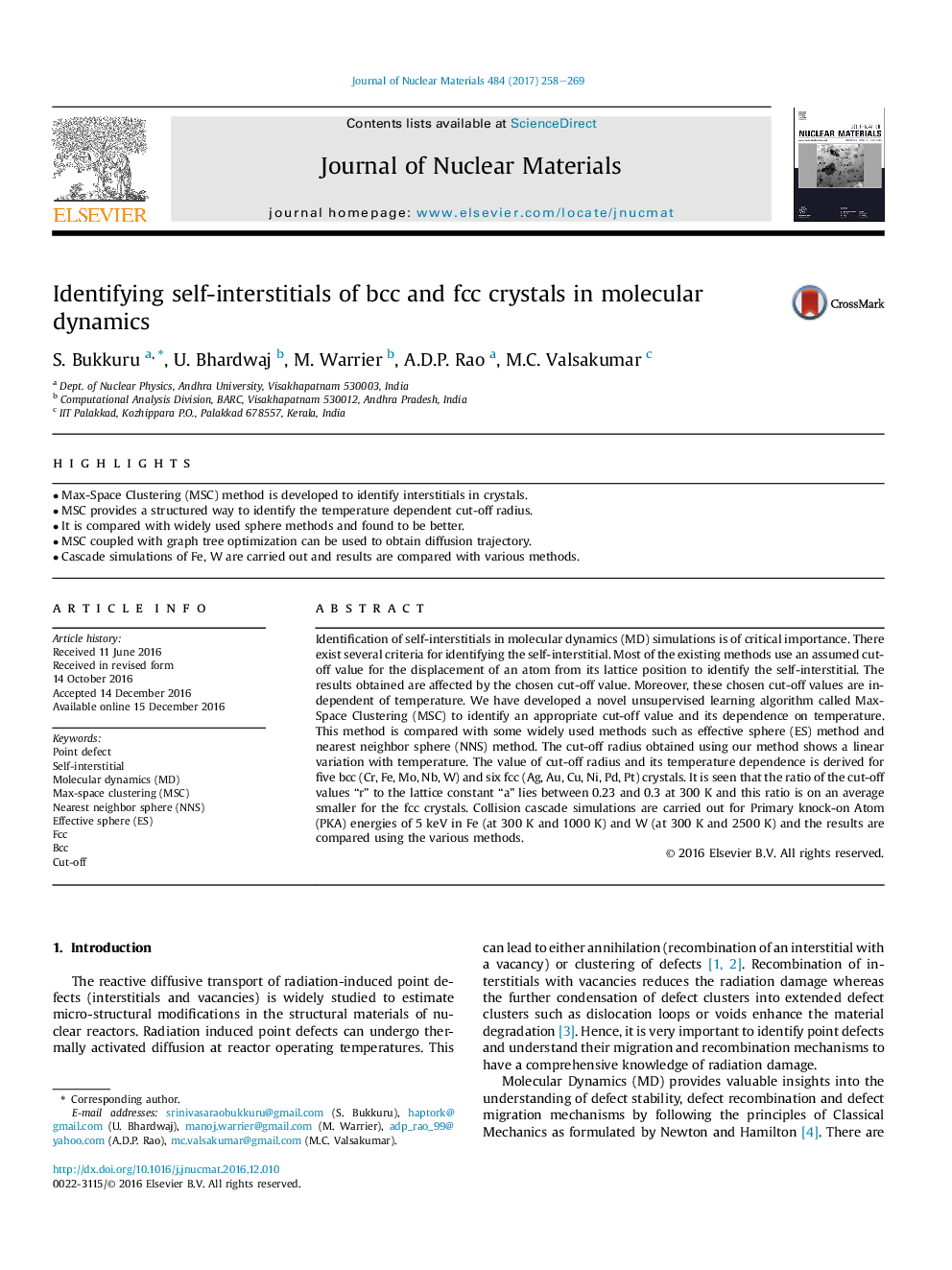| Article ID | Journal | Published Year | Pages | File Type |
|---|---|---|---|---|
| 5454445 | Journal of Nuclear Materials | 2017 | 12 Pages |
Abstract
Identification of self-interstitials in molecular dynamics (MD) simulations is of critical importance. There exist several criteria for identifying the self-interstitial. Most of the existing methods use an assumed cut-off value for the displacement of an atom from its lattice position to identify the self-interstitial. The results obtained are affected by the chosen cut-off value. Moreover, these chosen cut-off values are independent of temperature. We have developed a novel unsupervised learning algorithm called Max-Space Clustering (MSC) to identify an appropriate cut-off value and its dependence on temperature. This method is compared with some widely used methods such as effective sphere (ES) method and nearest neighbor sphere (NNS) method. The cut-off radius obtained using our method shows a linear variation with temperature. The value of cut-off radius and its temperature dependence is derived for five bcc (Cr, Fe, Mo, Nb, W) and six fcc (Ag, Au, Cu, Ni, Pd, Pt) crystals. It is seen that the ratio of the cut-off values “r” to the lattice constant “a” lies between 0.23 and 0.3Â at 300Â K and this ratio is on an average smaller for the fcc crystals. Collision cascade simulations are carried out for Primary knock-on Atom (PKA) energies of 5Â keV in Fe (at 300Â K and 1000Â K) and W (at 300Â K and 2500Â K) and the results are compared using the various methods.
Related Topics
Physical Sciences and Engineering
Energy
Nuclear Energy and Engineering
Authors
S. Bukkuru, U. Bhardwaj, M. Warrier, A.D.P. Rao, M.C. Valsakumar,
